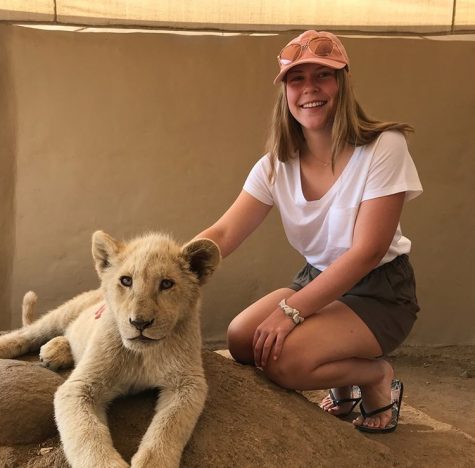Art, Technology, and Innovation
April 3, 2019
In the age of technology, anything one can dream up is at their fingertips, from communication, entertainment, to education. Technology has brought major advancements in medicine and has forever changed society. With kids playing on iPads before they can speak, social media seemingly existing at the forefront of every teenager’s life, and adults tucked away behind screens for hours on end at work, technology is a vital life source for society. However, an often-overlooked symptom of technological advancement is its impact on art.
A culture defined by paint strokes and clicks of a camera has been transformed by the tech world. Take photography, an industry that has historically been dominated by a precise process of capturing pictures then developing them. This is no longer the case because phone cameras allow anyone to take professional-level photos and apps like FaceTune and VSCO let even the most inexperienced photographers edit like professionals with the swipe of a finger. In just 19 years from the birth of the camera phone, originally having 110,000-pixels to today’s most recent iPhone having 12-megapixels the evolution of the camera phone was the catalyst for how photography has changed technologically.
Even after easily snapping pictures on their phones, people nowadays have the ability to edit those pictures with ease on apps like VSCO and FaceTune. These apps let users quickly edit anything from saturation and contrast to hair color and body shape.
This technology is especially relevant in social media. As one scrolls through their Instagram feed, practically every image has been edited in one form or another. Additionally, through social media photography and editing has become ingrained in the society every young person grows up in. From snapping pictures back and forth on Snapchat to precise poses and meticulous editing to share on Instagram, photography, and especially photography taken by phone, has changed the definition and limits of what it means to be a photographer.
At Seattle Prep, students in art window can be seen creating artwork in many forms from painting to sketching but a newer art form has emerged within technology. Students have found the accessibility and range of “materials” available in apps like Procreate and Autodesk Sketchbook to be unparalleled in classical art tools. These apps are much cheaper than actual art supplies and are much more mobile, allowing art to be made wherever the artist goes.
This transition into technology has been occurring for years. Ever since the animation emerged in the early twentieth century, it was clear the artform was on a path to technological advancements and integration. With the inauguration of computer and graphics processing hardware, animation became digitalized. Today, technology has advanced to the point where anyone can create their own works of art using the same tech that professionals only had access to just a few years ago.
Many have recognized this alteration in the art community and colleges have even begun integrating art and technology in courses. Digital Arts is even a major in most universities throughout the United States. With this integration
Some may ask if it is a bad thing for art to transition so far into the technological realm, but art was always meant to adapt and challenge society. Today it feels as though everything has been achieved and that there is no real area for discovery or truly new creation, but now technology is the frontier for art in all forms.


